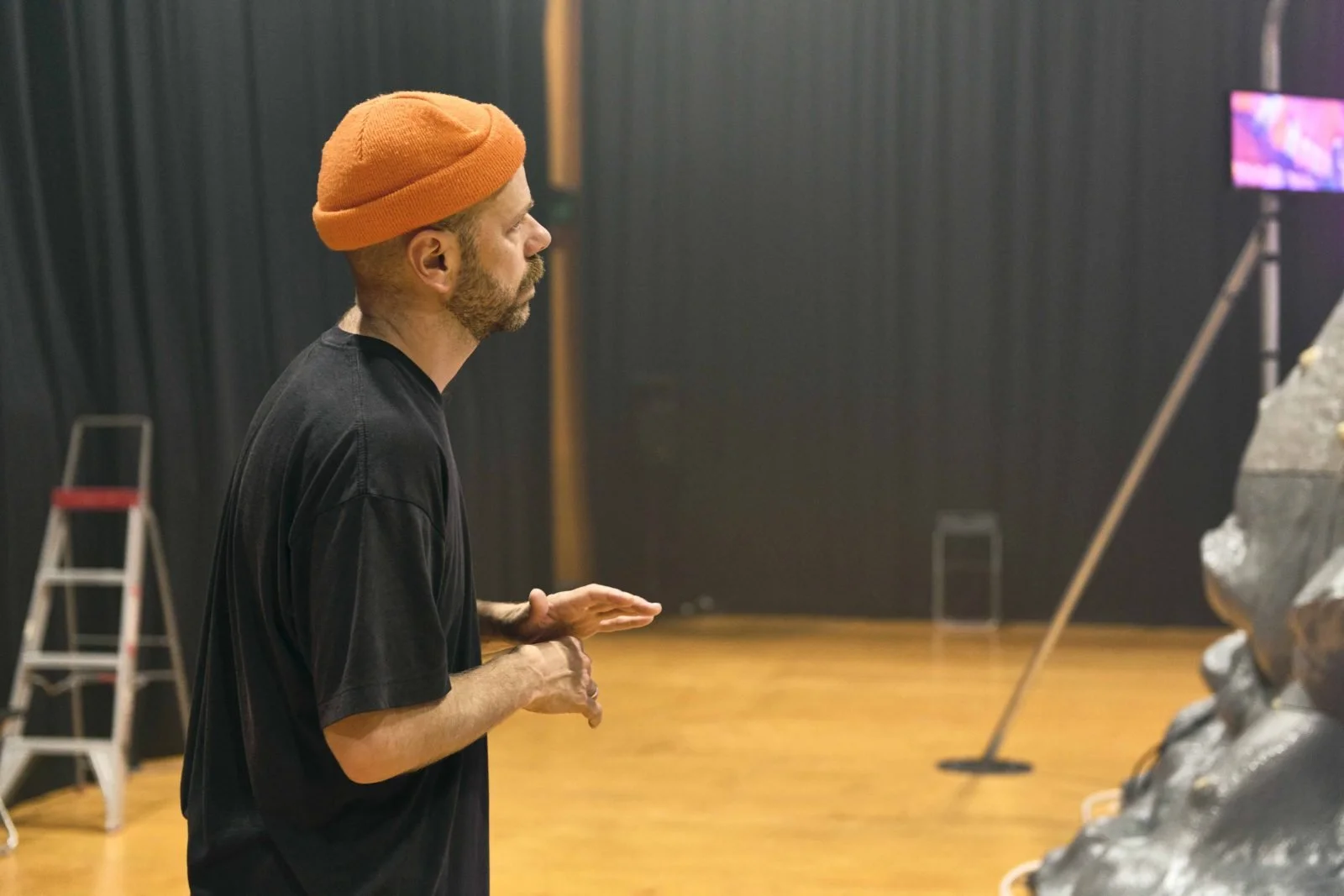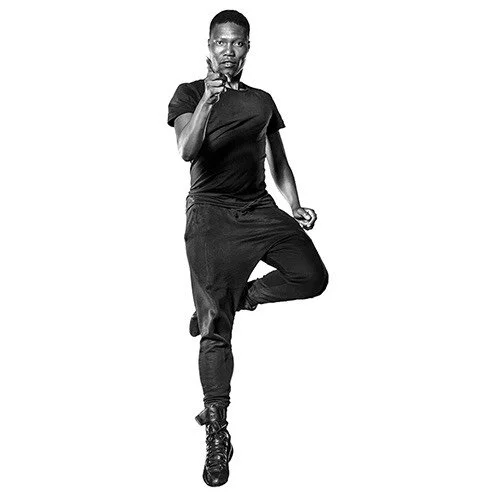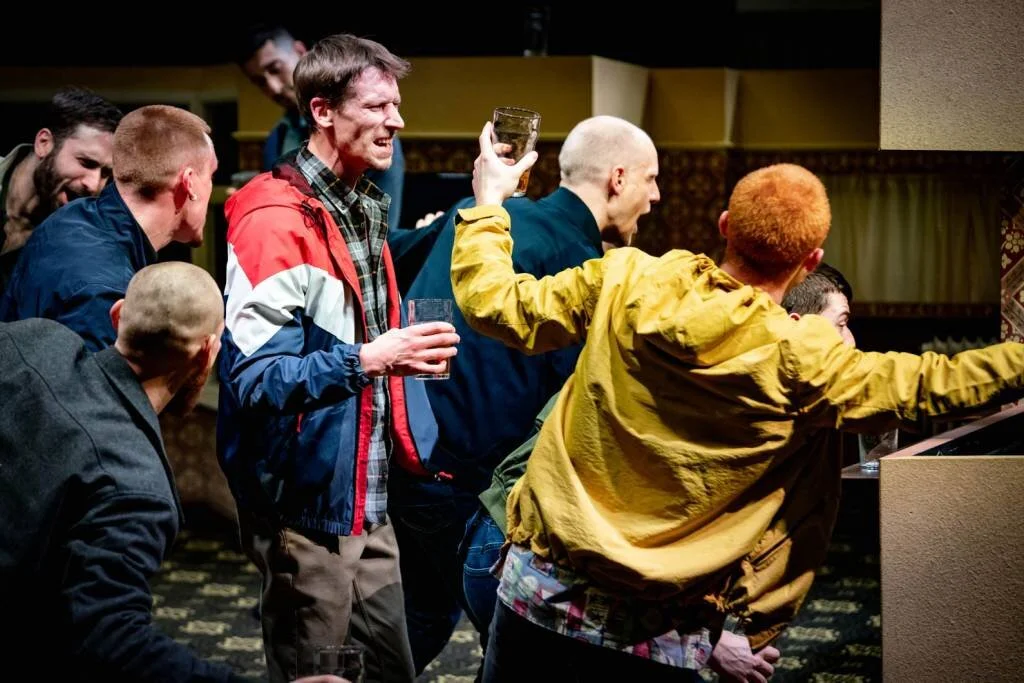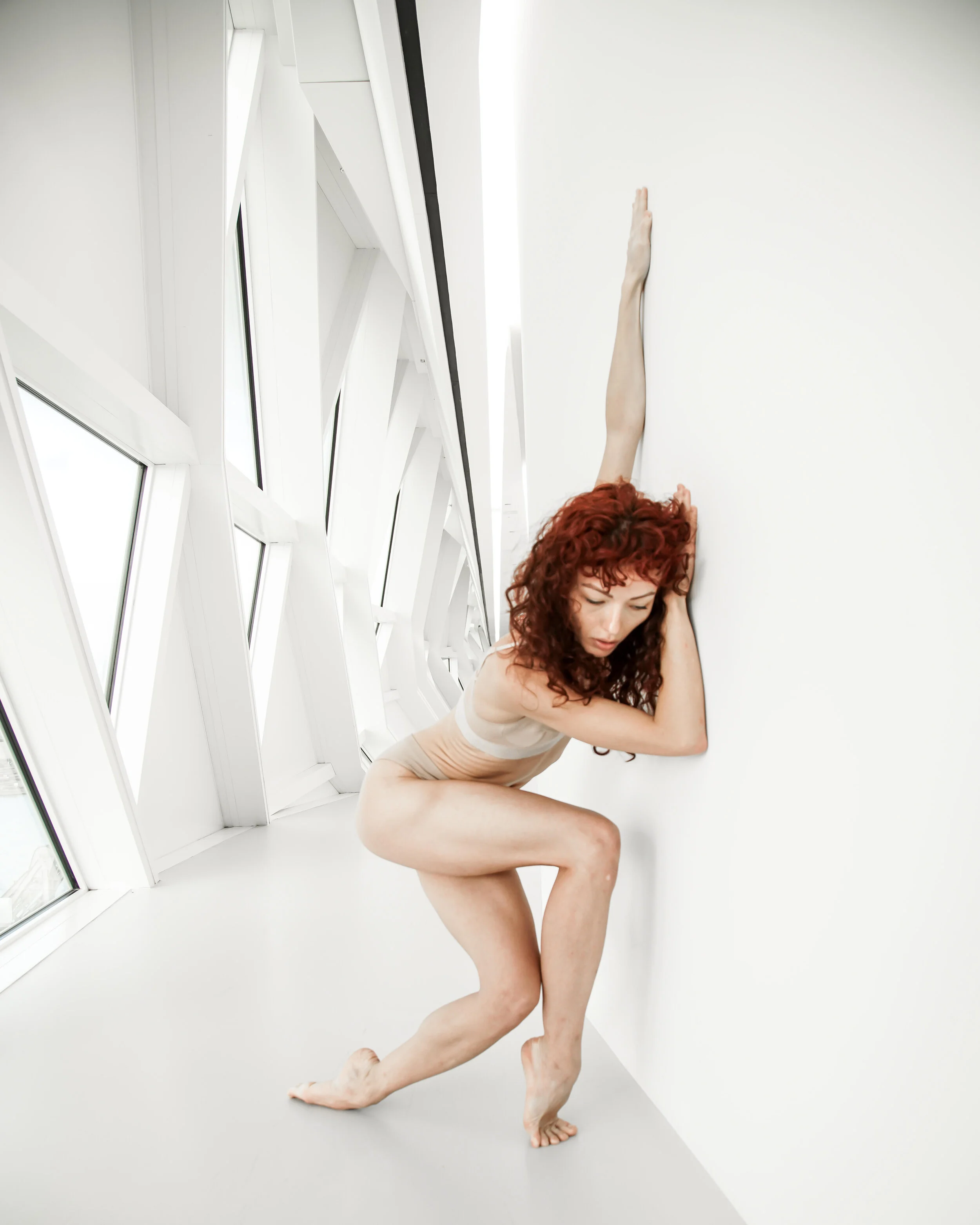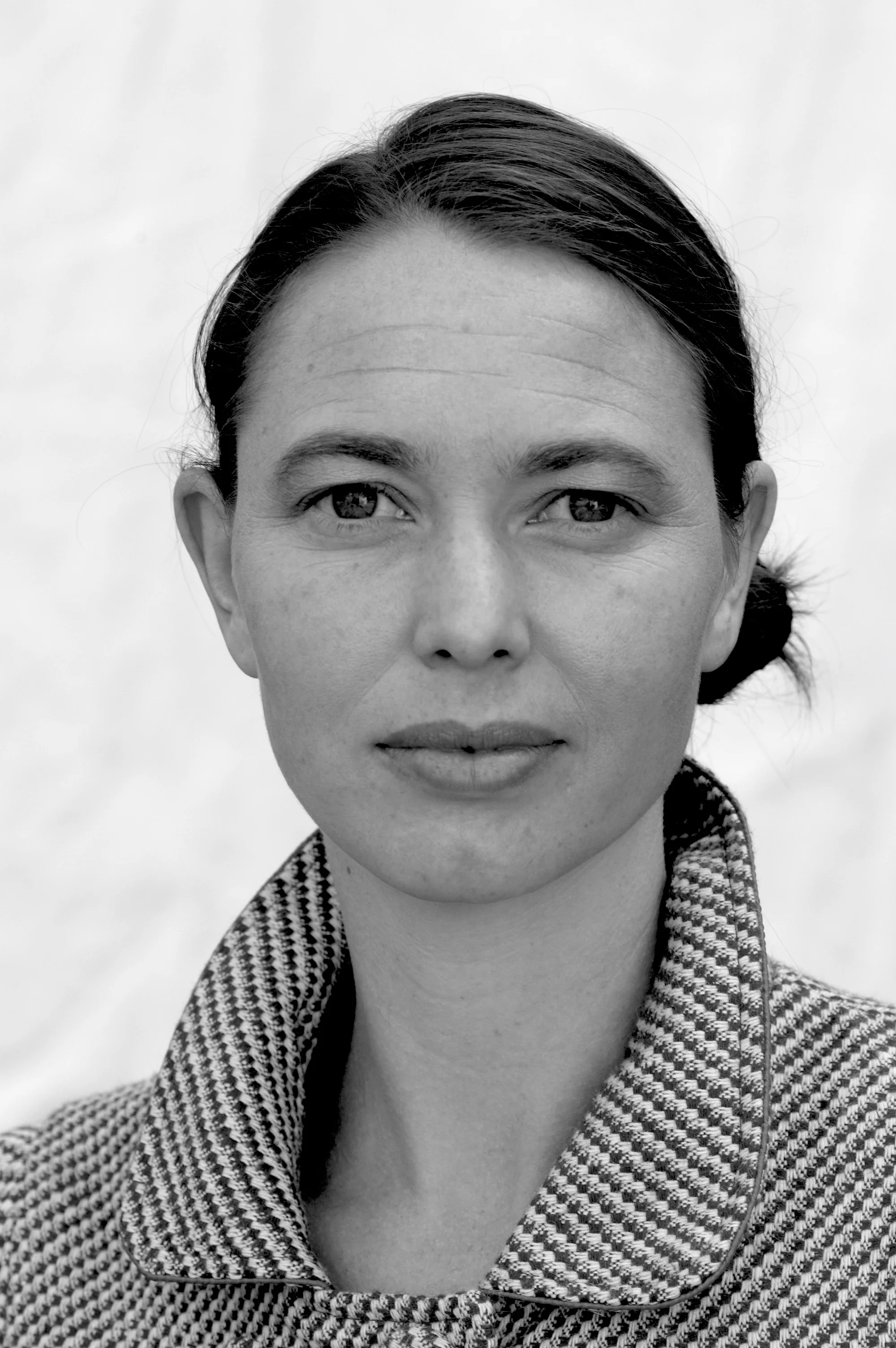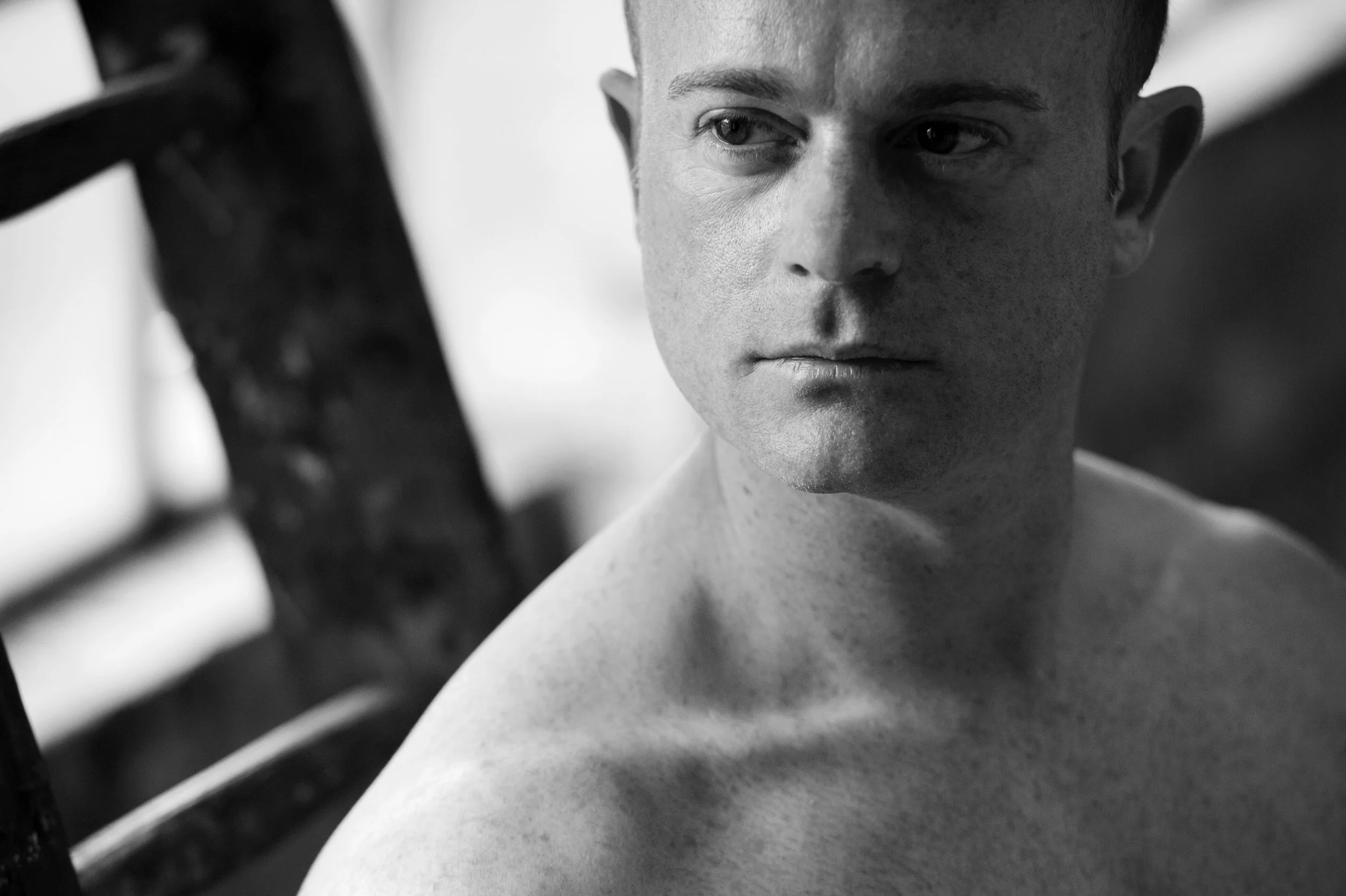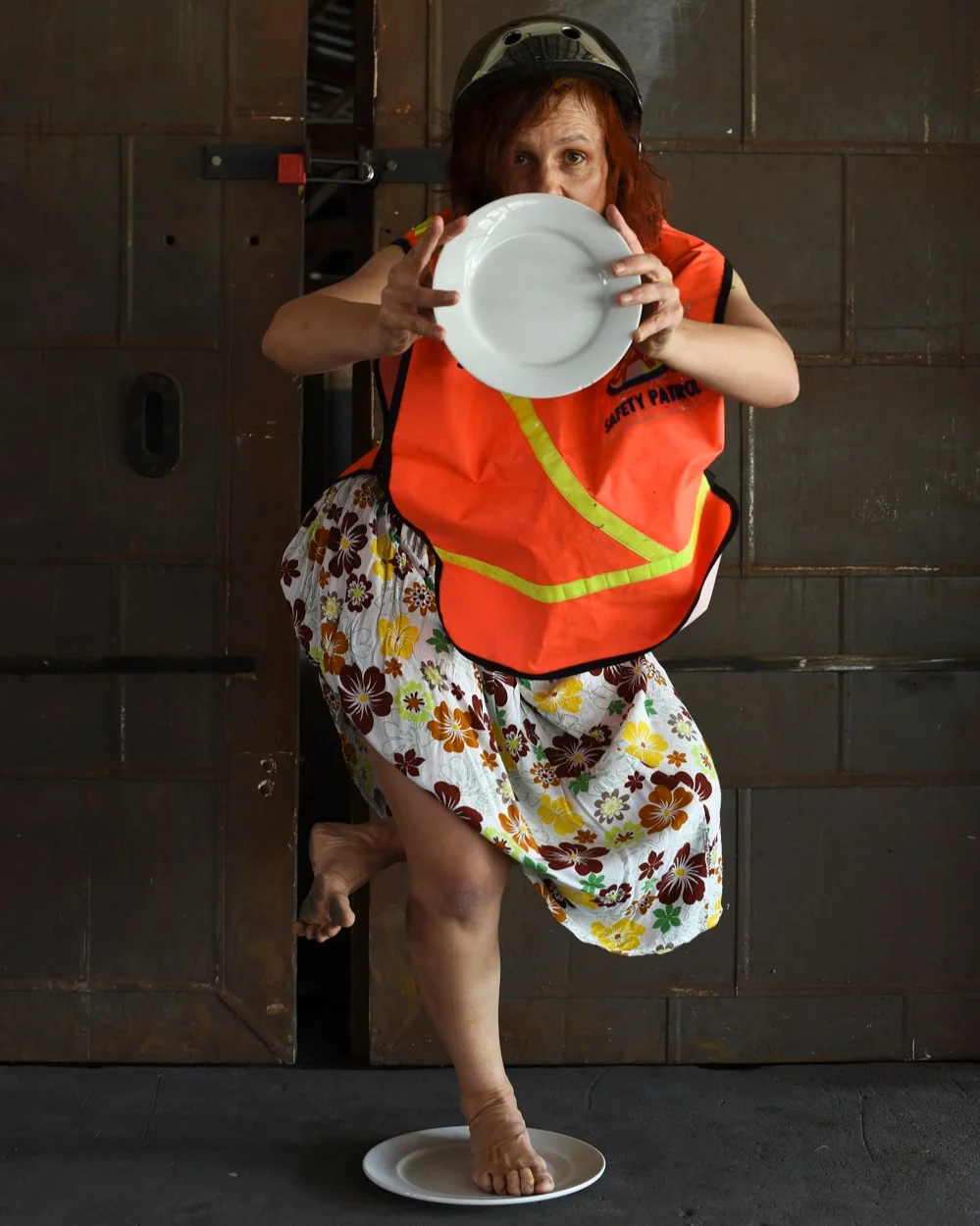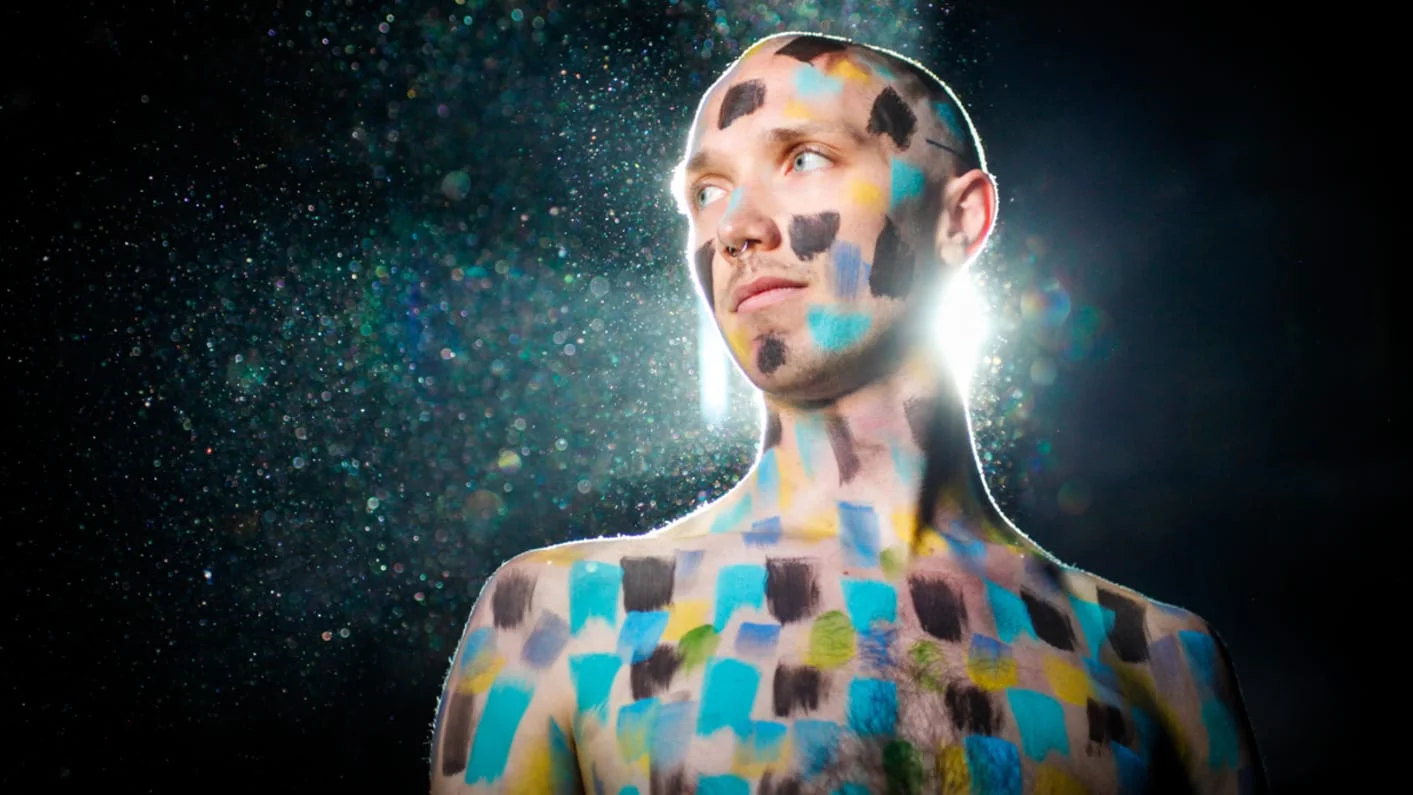This transcript is from an interview that was first published on 17th of October 2022, part of a collaboration with The Australian Ballet and their DanceX Season. This transcript has been edited slightly to help with clarity, the audio of this episode and more information can be found here. The interview starts by Dalisa about where dance started for her.
DALISA: Well, for me, being from a small town in Broome in the northwest of Australia, growing up with, you know, culture around you is, you know, a given. Uhm, we're immersed in cultures from everywhere. So I think my beginnings and dance have been really affiliated with my cultural background, that being of Yawuru/Bardi, Malay, Filipino heritage, which here in Broome, we've been able to celebrate those cultures in the way that the cultures have had to coexist with one another for many generations. So being, you know, it wasn't uncommon to be brought up learning Japanese Obon dance or you know, watching certain traditional dance for particular ceremonies. So my first introductions to dance have really been cultural. In high school and in primary school my interest in moving has always been there, whether it was gymnastics and flipping or dance itself. So, you know, participated in your usual common - contemporary dance classes at the local dance schools and gymnastic clubs. So that's kind of where where things began-began for me. But I think dance, or actually, you know, delving further into movement and how and the potential of what contemporary dance can be has kind of guided me in a slightly different direction in terms of finding forms of storytelling in new ways of carrying cultural information and culturally informed movement. To help story-tell if you like in creative ways.
ANDREW: That sounds really interesting. I think a lot of contemporary dance quite often is, like, the first form that, you know, maybe people learn or you know classical dance, but to have that kind of experience in a range of cultural dances must really inform your practice now, overlaying contemporary dance or those different modes of storytelling.
DALISA: Yeah, and not to devalue, but I think being kind of introduced or exposed to different ways of looking at moving bodies, dancing from an early age and not being a master of any if you like, but appreciating that bodies move differently in contemporary forms has - has an ability to look at dance in in a different way from that beginning. So I'm kind of happy I didn't get the strict, you know, Western ballet dance practice drilled into me from an early age that that didn't happen. However, I did walk the reef and learn parts of Malay martial arts and things like this that actually you know, connected with the life I lived more sensibly in dance and movement now that I look back.
ANDREW: And you're still based in Broome, that's correct, isn't it?
DALISA: Yeah, Yep. Born and bred here and all my family come from this region. Yep.
ANDREW: I think that must be a really nice context as well in terms of making work 'cause so much. I guess ‘art’ is seen quite often as being placed in the city or people leave, you know the places they grow up to create work or to create a living in this. You know, whatever we do ‘art stuff’? ‘Creative stuff’, so it's really nice I guess to keep doing that on Country and where you’ve been born and grew up.
DALISA: Yeah, and again, I think that's just really the fabric, the cultural fabric and richness of this region, of the Kimberley region and Broome in particular, being exempt from that white Australia policy and having so many different cultures, having to find a way to coexist with one another over generations, including appreciating each other. Languages, dance, stories, festivals, all the rest. You know, that's quite a melting pot of information that young people - generations have been brought up with that - kind of very thankful for that because the rest of Australia could have been like that a bit earlier.
ANDREW: I remember visiting Broome and the cemetery and just the different kind of parts of the cemetery and just the different, I guess practices around burial that were observed. Those kind of things which you don't see in other parts of Australia.
DALISA: Yeah, and those things are acknowledged, you know, the difference, but also the respect that that's fine to have difference within community. And I think, you know, I never really had the urge to leave home. Of course I did to study further with musical theatre through WAAPA, a course that was developed to kind of develop Indigenous artists for productions like Bran Nue Day, written by Uncle Jimmy Chi and facilitated by Michael Leslie, who was, you know, at the forefront of many of our Indigenous platforms for dance. And yeah, I think being introduced to the power of storytelling and the forms that people were using allowed me to, you know, adapt the way I look at that or actually I had examples to look at like Bran Nue Day and Corrugation Road and other amazing pieces that have come out of the Kimberley, the region that I lived and grew up, that you can kind of start to see the potential for our stories being told by us with these forms in a way that can speak to to the wider Australian communities?
ANDREW: Can you tell us a little bit about the Kimberley 'cause I think for a lot of people it will be maybe a part of the world they haven't explored or they've seen photos of, but can you just give us a bit of context of the area and what it means to you, I guess.
DALISA: Yeah. Well, there's. Yeah, I mean, I'm not good with, you know, measurements and things in terms of how many kilometres and things, how far it stretches, but to kind of give you a perspective of (it) - there’s at least 35 different language groups within, you know, this Northwest region. Like, Broome’s closest town, is Derby 2 hours away, and then the next biggest kind of centre is probably Kununurra, with Fitzroy in the middle. And that's about, you know, a 7-hour drive away and then you've got the saltwater and freshwater places you've got quite diverse country, but, you know, very strong in language, strong in dance and culture, being passed on but also threatened with the modern world we are living in. There's things that are threatening the survival of those things, but, you know there are very strong and determined communities that are doing everything they can to hold onto all of those important things.
ANDREW: Yeah. And can you talk a little bit about Marrugeku and your company and how that works, the type of work you make?
DALISA: Yeah, it takes a bit to explain. Yeah. Marrugeku has such a big story. You know, we're in our, I think, 27th year. Actually, Michael Leslie, who I spoke about earlier, Gamilaraay choreographer, had the idea to invite Stalker Theatre Company, as well as Indigenous artists like myself from small towns and other regions in WA to collaborate to make a show about the Mimi spirits of Arnhem Land. He had many years before seen the form of stilt dance in Africa in the 70s and thought that that was a beautiful form that could depict the - the spirit world of, of Arnhem Land and we all collaborated together to make a piece for Perth Festival so commissioned into existence back in oh, I don't want to get it wrong, but I think it’s ’94? And we began. We had to, kind of, there was so many people, different types of people working with one another, with the Kunwinjku people of Arnhem Land of a place called Gunbalanya, working with the Elders and the Songmen and the dancers of that that community to help find the right way to tell the story of the Mimi spirit. So lots of careful listening to one another, lots of learning and reciprocal learning going on, not just from those with the professional ability to make performance, but those with the cultural knowledge and in those early days I was like 18 so very young, and - and we were all at different levels of our learning. We began to learn together, sit in circles, sit and talk and listen to what we reflect back on now was quite, it was like reconciliation in action. You know, we're working through lots of problems. Not just problems, but, you know the way that we see the world and the way that Australia's lack of recognising Indigenous ways of knowing and being was present. So we grew out of that project, we started with that project and little did we know we would go on to make further work. And 27 years later, we're very committed to continuing to find new forms of storytelling to kind of be a response, back to our communities and our Country and the world in sharing Aboriginal perspectives and ways of knowing and being through dance and theatre.
ANDREW: Yeah, there's a real sense of truth telling in a lot of the work and I guess the conversations that you're having and the company is very political in the way it tells stories and I personally think art and culture is a great place to have dangerous conversations and have, you know, conversations that bring people together, maybe change minds or perspectives, and it seems that that's a central feature of a lot of the work that the company creates.
DALISA: Yeah, I think we definitely work from a from an Indigenous foundation and when we say that we mean like those that are guiding or shining a torch ahead of the journey for us are those Indigenous leaders that are able to kind of put a finger on the pulse of what are the things that need to be discussed right now and often we're speaking with my pop, Patrick Dodson, who's patron of the company, but has worked on many projects as a cultural dramaturg and other leaders like June Oscar and in the early days, of course, Thompson Yulidjirri from the Kunwinkju People. And we've learned an extreme amount. Just making work together. you know, is not just about fun and games it’s hard yakka as well.
ANDREW: Yeah and bringing in all different perspectives as well and trying to honour all those different viewpoints as well, I imagine, must be a big part of the collaboration as well. 13:57
DALISA: Yeah, it's a kind of honouring of each moving body or creative mind that has been invited to collaborate with us. We value everyone equally, but you know, of course each person has a role to play in the team that's been created, but no one is, you know, less valuable than another. And of course, we kind of create like a family if someone needs more support in a particular area we need to find the way to give them that and if it's cultural learning or if it's professional learning or if it’s - whatever it might be - we need to help one another to find and create, and do the work that that needs to be done. But we've worked with such amazing artists across the many years that all contribute to what Marrugeku is.
ANDREW: I wonder, in terms of how the work translates when it moves, you know, across countries and takes place in different contexts and in different locations, does that change the reading of the work, or does it always feel kind of really embedded in place or really embedded in where those stories have emerged or the explorations have emerged?
DALISA: Yeah, I think the challenge has been to create these processes that we can carry Country with us. So whether we’re, you know, performing internationally or you know on other people’s Country here in Australia, we’re carrying part of that - that process is always with us. So if it was a production that’s had choreographic processes that have been out on a specific site or a place that that has given us material, we carry that with us. We actually practice that through our labs and in our choreographic practice when creating material and often are doing it to just bring it into a studio, let alone someone else’s Country. And then I think that power of dance and kind of challenging an audience to feel what you're trying to convey or what you're trying to express is part of the magic that, you know, through movement and theatrical devices, you're able to create these spaces that allow you to come at the information, as complex as it might be, from feeling rather than logic. Or, you know, something that's scripted so that you know what to feel at what point. So I think that's kind of the power of the kind of dance that we try to create is something that touches people in a meaningful way that sometimes they may not know why they're crying or why they're laughing or why they're responding, but it's something that's felt. And I think that's something that we aim to do.
ANDREW: In terms of the time in which you have made work as a company and the conversations that are happening more broadly in society, do you feel like things are shifting or things are changing or yeah, I guess, where the work is placed in the world, you know, does that make sense as a question?
DALISA: Yeah, well we've just literally come back from touring Europe for the first time since Covid, we would have been regularly visiting had not the pandemic happened. But we've just returned from Germany and Venice in Italy and had a chance to, you know, dust off the rust and check out what audiences think of our work and we received all kinds of feedback. Most of the audiences over there have a limited kind of viewpoint of Australia and that particular show that we took looks at Australia’s fixation on incarceration, our newest piece Jurrungu Ngan-ga. And so it's not the easiest, it's very complex and of course there’s subject matter that if you're in Australia you may know about, but if you're not it, it might be something that is hard to connect with. However, that I think the dance, the strength of the dance and the theatrical devices we use to kind of create this - solidarity really through - and dance as resistance and you know movement that can speak up and stand up for people, but also you know embodying the fear itself of what we create here in Australia as dehumanising spaces for other humans. And those kinds of things can be felt on a human level, no matter where we perform it. And so we had a lot of feedback that connected with that, the feelings that they, you know, the feelings of empowerment as they walked out or the feelings of the hurt that they feel for the ones that are most marginalised communities, you know?
ANDREW: ‘Dance as resistance’ is such a strong statement. Really, really, really powerful. I was wondering if you could talk a little bit about the work that you're bringing to Melbourne as part of Dance X with Australian Ballet.
DALISA: So it's a solo work. It's my first solo, which premiered back at Dance Massive in 2013, followed by a Broome season that year and has been touring all around the world and the country and to very remote and regional venues in the Kimberley and other places. It's a work that's called gudirr gudirr, which is named after a small bird that calls to tell you when the tide is turning. Here in Yawuru Country we have this little bird that is a wader bird. It calls out a little tweet that tells you when the tides are about to turn to kind of give you that warning to get to higher ground. And in a conversation with my pop, Patrick Dodson, and discussing, you know where to start to make a solo he kind of compared my work in trying to help revitalise Language here in my region and for my Yawuru community, but also working with Elders to create that kind of conduit between those that are the future leaders and the ones that we were we are losing. And he felt that the work that I do both in Marrugeku and in my community are akin to that little bird that calls to tell you that it's time to act. So we through the work I look at the historical information about this place like being exempt from the White Australia policy and how those of mixed race here in Broome were treated or regarded as kind of better servants if you like, than just Indigenous people and that, you know, to have your family and your own people being spoken about like that is quite confronting. So it's me working through that, but it's also looking at metaphorically, how the tide is turning for our community here, like, some of the devastating social issues we are faced with right now that are repercussions of colonisation and others - other terrible things. One of those things, being crowned with, you know, the Kimberley region holds one of the highest suicide rates in the world, and this is something that I am not attempting to educate people about 'cause I don’t have that - I don't come from a place of that, but I feel it everyday living in my community and through dance, I find ways to express my concern and my hurt and my longing for our next generation to dig deep and find the resilience and strength that our old people have - and we have to get through these challenging times and find that higher ground really. 23:47
ANDREW: Yeah, I can imagine also doing the work since 2013, that it must also be quite confronting that the issues are still all there and still very present. So the context of the work is still very real in that sense.
DALISA: Yeah, and I think you said it earlier. You asked about how does it change over time and things like that and that's exactly right. You reflect back and you go, ‘Have those rates improved? Are there more places that are being destroyed on our homelands for mining or fracking?’ All these things are contributing to the state of well-being of our people. Our language, you know, since making this work, we've lost, you know, many full speakers of these 36 languages just in this region. You know, there's so many people we lose every day. And with them goes all their knowledge, you know. It’s like a matter of urgency, a continual matter of urgency, even after so many years.
ANDREW: Yeah, there's a lot there. Returning to the work, does it feel different or does it shift over that time in the different context? What's that like?
DALISA: Yeah, I’ve found that there's little things that I question in the work. Where they used to be a statement, they're kind of questioned ‘cause, are those things still happening? Or have they already been and gone? So it's kind of like history repeating itself sometimes. I feel when I perform there's moments where I go,
‘Actually, that - that rings true today.’ It's not like me just speaking about it of the past, you know, and I think the last time I performed was at the Opera House in 2019, so it's been a couple of years since doing it and even in that time, like this is my first time since then to be performing it again. Well, I'm coming up to be performing it again before getting there for DanceX and, you know, I've already started to think that in the wake of, you know, not just the pandemic, but Black Lives Matter and all these other things that have since happened, you know, it's kind of all still very, very relevant.
ANDREW: Is it difficult to revisit again?
DALISA: Yes, I really do have to prepare. And prepare, not just my body, but my liyan - my spirit - because it's almost like it's my medicine. But I have to go through a journey each night with the audience to allow them to bear witness to my struggle and my community struggle, in a way that's authentic, but also in a way that I take care of myself.
ANDREW: And does the audience have to hold that with you? Or do they hold that with you?
DALISA: From past experience it seems that they are able to hold it with me. I think I do my best to connect with them right in their spirit. Which is always my aim, whether it's a solo or performing in an ensemble. That's my aim always to connect with those sitting there that I can barely see - their spirit. And, yeah I think they do come. I think Australia is up for it and I've been to other communities that have similar histories that definitely feel it also. Um, things resonate in, you know, all kinds of sites of where these stories are all too common. 28:18
ANDREW: I've been living overseas for a few years and going back and forth to Australia quite a lot, although that was very difficult in the pandemic or impossible. But I was back, you know, last summer and Invasion Day or Australia Day - The conversation around that seemed to have shifted so much in the four years that I had been away, and it was quite interesting to reflect on that and, you know, it wasn't a perfect conversation, but it had improved a lot and it was just a different conversation. And it did feel slowly, like some things were shifting in the psyche, in the conversation, the quality of the conversations.
DALISA: Yeah, I think definitely. That's good to know. I also, I agree I think some of the conversations I have, you know, in the different circles, but also what you see out there. You know, people are - Definitely, I think the wider Australian community are ready for these conversations, having these conversations. The government on the other hand, I, you know, I'm hopeful that the new government will bring some of this change that we've been asking and waiting for so long.
But it is still part of a wider system. And those systems are the things that need to be kind of readdressed and reimagined so that we can see some real change, you know, in the hearts and minds of people as to how they value one another and how they acknowledge each other stories in this place.
ANDREW: Yeah, those systems are very, very strong, very strong. Just living through the death of the Queen and the whole, you know, the pageantry of that and just that realisation of how far in the context I am now in, in the UK we are from anything that is remotely postcolonial, like you know, it's just so far from that, you know, and that truth-telling that's not, it's just not even present in a conversation and that need for strong conversations, I guess.
DALISA: Yeah and I find you know, even speaking with my pop Patrick Dodson, who is obviously a politician, but he said it on a number of occasions that when he works with artists he can feel and see the change that he speaks about almost immediately as we create things because we have that ability to imagine it in a different way through our body and through art and you know, he often says you know, an artist can write a song and that will stay with someone much longer than any you know, lecturer or you know, Public speaking - a speech that someone is given and I kind of always think that's the freedom we have as artists to go to these places, you know, to challenge ourselves and our audiences through our art making to really make it count, you know not to waste those opportunities to convey a perspective or another way of looking at something, especially if creating change.
ANDREW: Yeah, I think that's why so many people find artists so dangerous, isn't it? 'cause they can question and they can provoke and they can, you know, have these dangerous conversations, that create that space for people to reflect. And, yeah, it's very important. Very, very important. Just a final question. I was just wondering what's, you know exciting you in the world at the moment. Is there anything at the moment that's grabbing your attention? 32:43
DALISA: Oh, I think of the world - when you say the world, I'm thinking that was fantastic to finally, yeah to be travelling again and to be, you know, participating in these summer festivals in Europe or you know like that the vibe is this is up and happening again. But I think back closer to home, I'm really excited about the next generation. I see and have the privilege to work with some upcoming artists in our company and I just think the work that they're making and the work that they want to make and what they're finding in their bodies and how they're challenging themselves is just amazing. And I'm looking forward to - I'm excited about the work that they will make in the future. To speak and share, share on their stories and, you know, their perspectives and, you know, I think dance. I'm sort of speaking about the dance sector here. ‘cause, you know, I don't know, dance can fall into the trap of being or looking like one certain way and that should never happen because there's so many options and there's so many forms that you can feed from and if we honour the person moving with everything that makes them move, I think, we’ll uncover some special stuff for the future.




